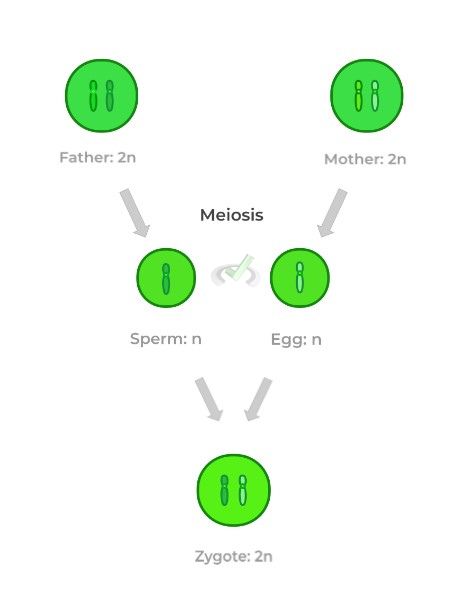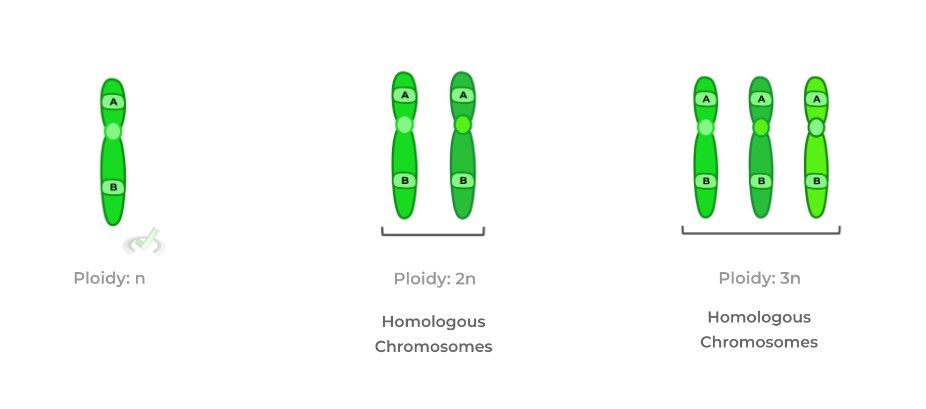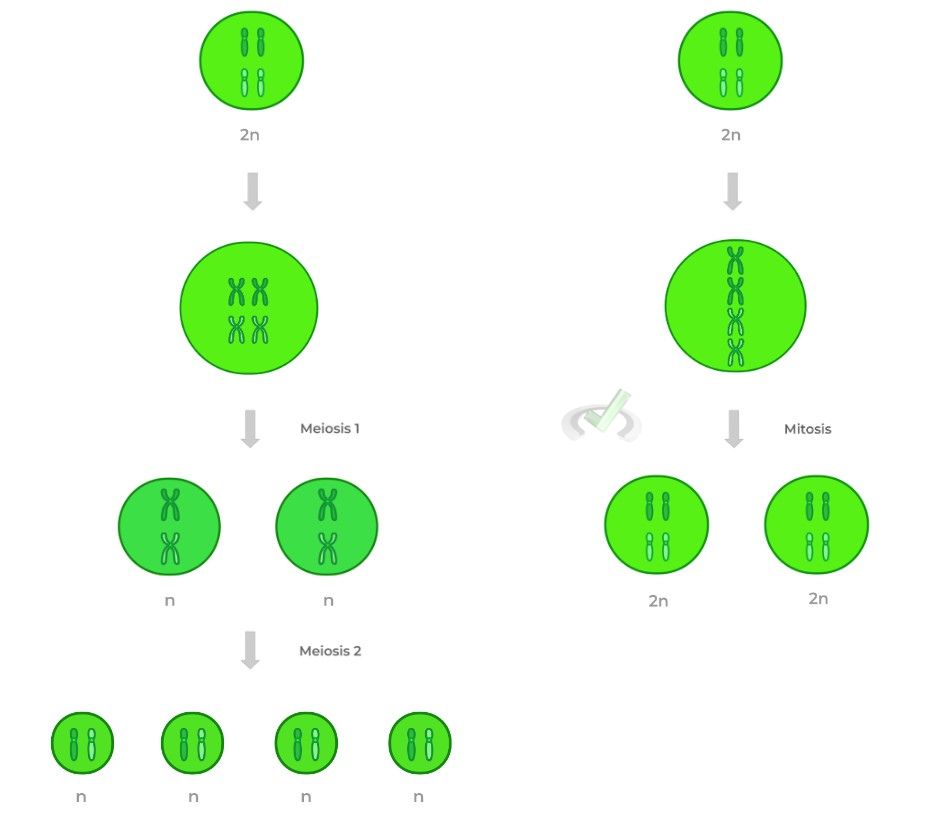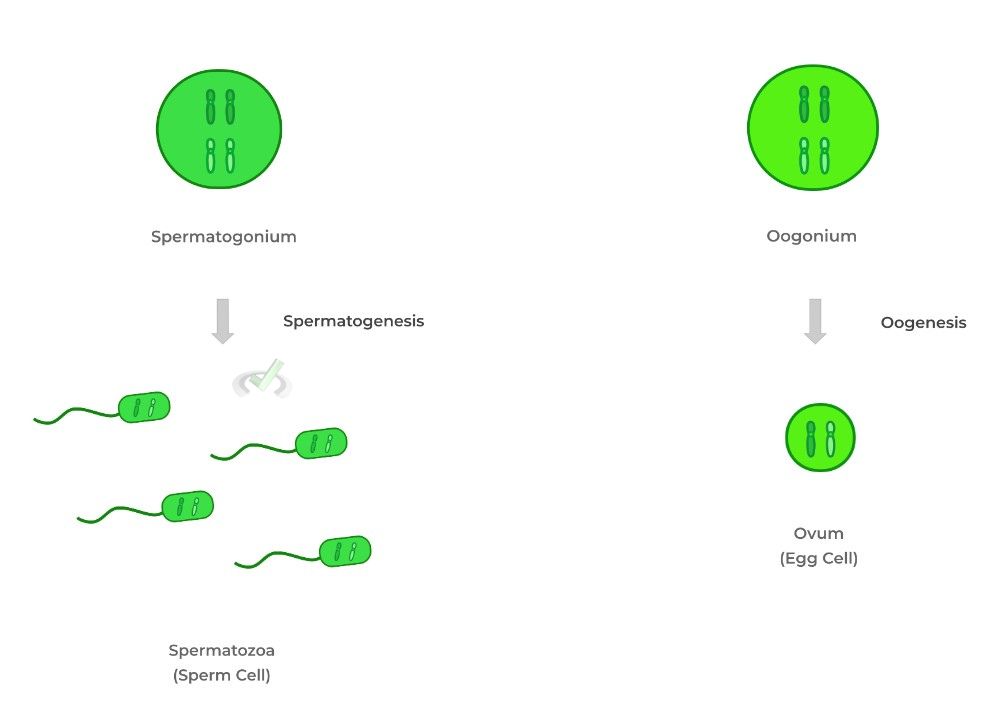I. What is the Significance and General Overview of Meiosis?
To think of meiosis as the “cooler” or “more advanced” version of mitosis would be right per say! Though meiosis is restricted to our reproductive organs, as opposed to mitosis which is prevalent throughout the body, meiosis constitutes the basis for how we reproduce as a species.
The process of meiosis is a complex but necessary one as it allows us to create a gamete sex cells that eventually come together during fertilization and in due course gives rise to an organism, one of the most fascinating occurrences in biology.
Just like with other topics, we encourage you all to learn and review this topic by comparing it with its mitotic counterpart! Perhaps take the time to make the table or draw a visualization of the processes side by side to really emphasize the similarities and differences between the two.
II. The Role of Meiosis
One important way to conceptualize the role of meiosis is by attributing it only to reproduction. Other than this, it has no other role in the human body, as we’ll discuss below.
A. Significance of Meiosis
The ultimate result of meiosis is the production of gamete, sex cells which eventually fuse together in fertilization to make a zygote!

Eventually, this results in a genetically unique organism thanks to the genetic contribution of the mother and father.
Notice how after meiosis, the gamete has one less homologous chromosome and is termed haploid, meaning it has only 1 set of chromosomes.
In contrast, the parent cells and zygotes are diploid as they have 2 sets of chromosomes, also termed the homologous chromosomes.
B. Review in Ploidy
As we mentioned the terms haploid and diploid above, it’s probably best to review some basics about ploidy, which refers to the number of chromosomal sets a cell has.
Recall that we have homologous chromosomes, which have the same genes located at the same position (loci), but may differ between their allelic variants.
Ploidy simply refers to how many of these homologous chromosomes there are in a set. Look at the figure below for a better visual understanding!

Notice how all the chromosomes have the same genes (A and B) at the same loci. The only difference in ploidy is how many of that chromosome is present.
In diploid (2n), there are 2 homologous chromosomes where in triploidy (3n), there are 3 homologous chromosomes.
In the context of human eukaryotic meiosis, the parent cell is diploid (2n) and will undergo meiosis to generate haploid (n) gamete, sex cells.C. Differences Between Mitosis and Meiosis
One major difference between mitosis and meiosis is their end products, where mitosis results in 2 genetically identical daughter cells while meiosis produces 4 gamete sex cells, each with ½ the amount of DNA of the parent cell.
Another major difference is that meiosis is actually completed in 2 phases, termed meiosis 1 and 2, as opposed to mitosis which is complete in 1 phase.
Hopefully the figure gives a better visualization of the differences! Note that during meiosis 1, it’s the homologous chromosomes that are being separated, not the sister chromatids! This is what creates the haploidy in the germ cells!
It’s during meiosis 2 where the sister chromatids are separated similar to mitosis. However, still remember that this still generates haploid gametes.
Much of this will become clearer and explained in our other article covering the actual process of meiosis!
III. Bridge/Overlap
Meiosis is the basis behind the development of the body’s sperm and egg sex cells for males and females, respectively. Let’s take a brief look at how meiosis is applied in this scenario.
I. Generation of Sperm and Egg Cells
When meiosis occurs to generate sperm cells, the process is called spermatogenesis and results in the parent cell, called spermatogonium, producing 4 haploid, mature sperm cells called spermatozoa.
The process is called oogenesis for egg cells and results in the parent cell, called oogonium, producing only 1 haploid, mature egg cell called an ovum, as we’ll explain in another article.
IV. Wrap Up/Key Terms
Let’s take this time to wrap up & concisely summarize what we covered above in the article!
A. Significance of Meiosis
Meiosis results in the generation of gamete, sex cells which fuse together in fertilization generating a genetically unique zygote!
In humans, the gametes are termed haploid as they only have 1 set of chromosomes while the parent cells are diploid, having 2 sets of chromosomes.B. Review of Ploidy
Ploidy refers to how many sets of homologous chromosomes a cell has. Humans are diploid (2n), as we have 23 pairs (i.e. 2 sets) of homologous chromosomes.
Recall that homologous chromosomes contain the same genes at the same loci, but may differ in their allelic variants.C. Differences Between Mitosis and Meiosis
While mitosis results in the generation of 2 genetically identical daughter cells, meiosis produces 4 gamete sex cells, each with ½ the amount of DNA of the parent cell.
Additionally, meiosis actually requires 2 phases to generate the 4 gametes, termed meiosis 1 and 2, while mitosis concludes in 1 phase.V. Practice
Take a look at these practice questions to see and solidify your understanding!
Sample Practice Question 1:
A haploid sex cell has 3 chromosomes. How many chromosomes would the cell have if it was diploid?
A. 3
B. 6
C. 9
D. 12
Ans. B
The term haploid refers to the cell only having one set of chromosomes. In this case, 1 set has 3 individual chromosomes. A diploid cell would have 2 sets of chromosomes totalling to 6 individual chromosomes.
Sample Practice Question 2:
Meiosis I results in the separation of the ______________ which is ______________ to mitosis.
A. Homologous Chromosomes, Similar
B. Homologous Chromosomes, Dissimilar
C. Sister Chromatids, Similar
D. Sister Chromatids, Dissimilar
Ans. B
Recall that meiosis I and II results in the separation of the homologous chromosomes and sister chromatids, respectively. Meiosis II is more similar to mitosis as it involves the separation of the sister chromatids.


 To help you achieve your goal MCAT score, we take turns hosting these
To help you achieve your goal MCAT score, we take turns hosting these